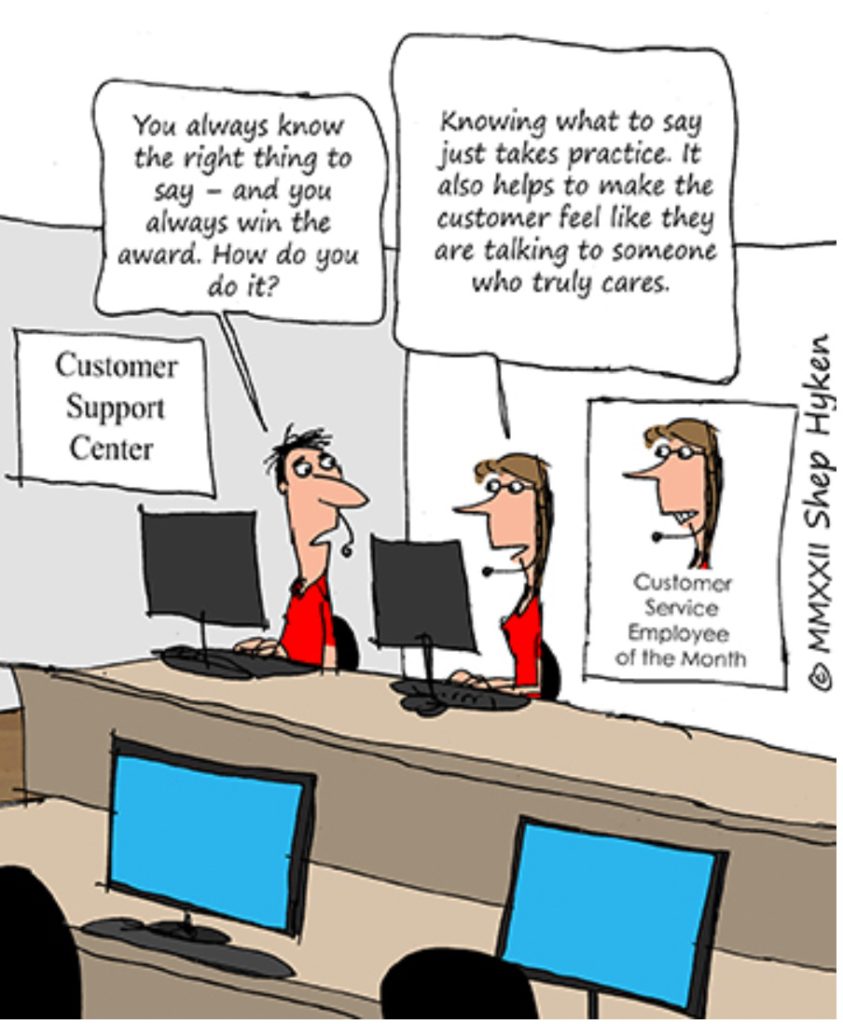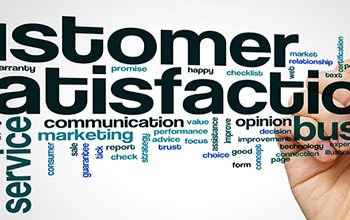
Intro by Skip Cohen
Not too long ago, I shared a post from Shep Hyken’s archives with a similar theme – dealing with customer complaints. What I liked about this post was Shep focusing on the importance of attitude and tone plays in setting the stage.
Approximately twenty years ago, I attempted to upgrade our flip phones to something more current at the Verizon store in Santa Monica. I was working at WPPI/Rangefinder Publishing then, and the store was near the office.
I was told that my contract was still in force and we could not make any changes for another 3-4 months. I explained I was willing to pay the additional amount, but all I got was the same response from a guy I later nicknamed “Dr. No.”
It was a Friday, and at 9:00 PM that night, I looked up the CEO of Verizon, his email address, and wrote to him. My opening line was simple, “Imagine how frustrated I must be to be writing to the worldwide CEO of Verizon about a problem with my phone.” I went on to explain the simplicity of what I wanted to do.
An hour later, he responded! He not only apologized but assured me Verizon appreciated my business and promised to have his secretary call me first thing Monday morning. On Monday morning, she called and apologized. She told me she was upgrading our phones at no charge and firing some of the staff at the Santa Monica store!
That one act of Customer Service kept me loyal to Verizon for close to twenty years!
Now, think back to some of your most demanding upset customers. It’s not just what you say in response but your ability to empathize and help them quickly. Verizon made me feel like I was truly important to them, not to mention the CEO contacting me directly.
So, learn to empathize and make your customers feel valued. Respond quickly to their concerns and avoid “can-you-hear-me-now” scenarios, where it’s human nature to assume the negative when somebody doesn’t respond.
—————————————–
There are many ways to deal with complaints or angry customers. I’ve written a number of articles on the different ways to do so, and today I want to add an excellent technique.
The idea is to say something that lets the customer know you understand the problem, you’re in sync with their concerns, and you empathize with their frustration, anger or whatever emotion they’re exhibiting. I refer to this as The Perfect Thing to Say.
This is more than apologizing and acknowledging the customer, which are steps one and two of my five-step process for dealing with angry customers. When a customer brings you a problem or has a complaint, you want to find a way to align with their goals and articulate it in such a way that immediately lets them know you are on their side. Let them know you’re in sync with them and what they want to achieve.
Here is a perfect example. I had switched to a new mobile phone. I was having great difficulty getting familiar with the new features. I wanted to return the phone and go back to the older technology. Actually, returning the phone wasn’t on my mind. I wanted to smash the phone and mail the pieces back to the manufacturer. It was that different. Eventually, my frustration forced me to call customer support. In just a short time, I was talking to a rep. I know he sensed my frustration, so I emphasized that I wasn’t angry at him but at the phone. After all, if he was there to help me, I didn’t want to make him angry.
Then the magic happened. Once he listened to my problems, making several comments that proved his empathy toward my situation, he said something that made me want to keep the new phone. He said, “I want you to love your phone so much that you’re willing to jump in front of a bus to save it.”
Trying to stay with his lighthearted comment, I replied, “I’d be happy to jump in front of the bus, as long as it was going backward.” But what I was really thinking was that this was a bigger challenge than he thought, and was he up for the task? Go ahead and give it your best shot.
Regardless of my frustration, I realized he was there to help me. His positive attitude and energy, along with his perfect thing to say, turned me from an upset customer into one who wanted to love his brand.
Think about the problems or complaints you hear most often. Is there a sentence or phrase you can work into the conversation that would turn that misery into magic? This isn’t something you make up on the spot. This is a line you will use again and again. It’s the line that will turn your angry customers into loyal customers who say, “I’ll be back!”





























